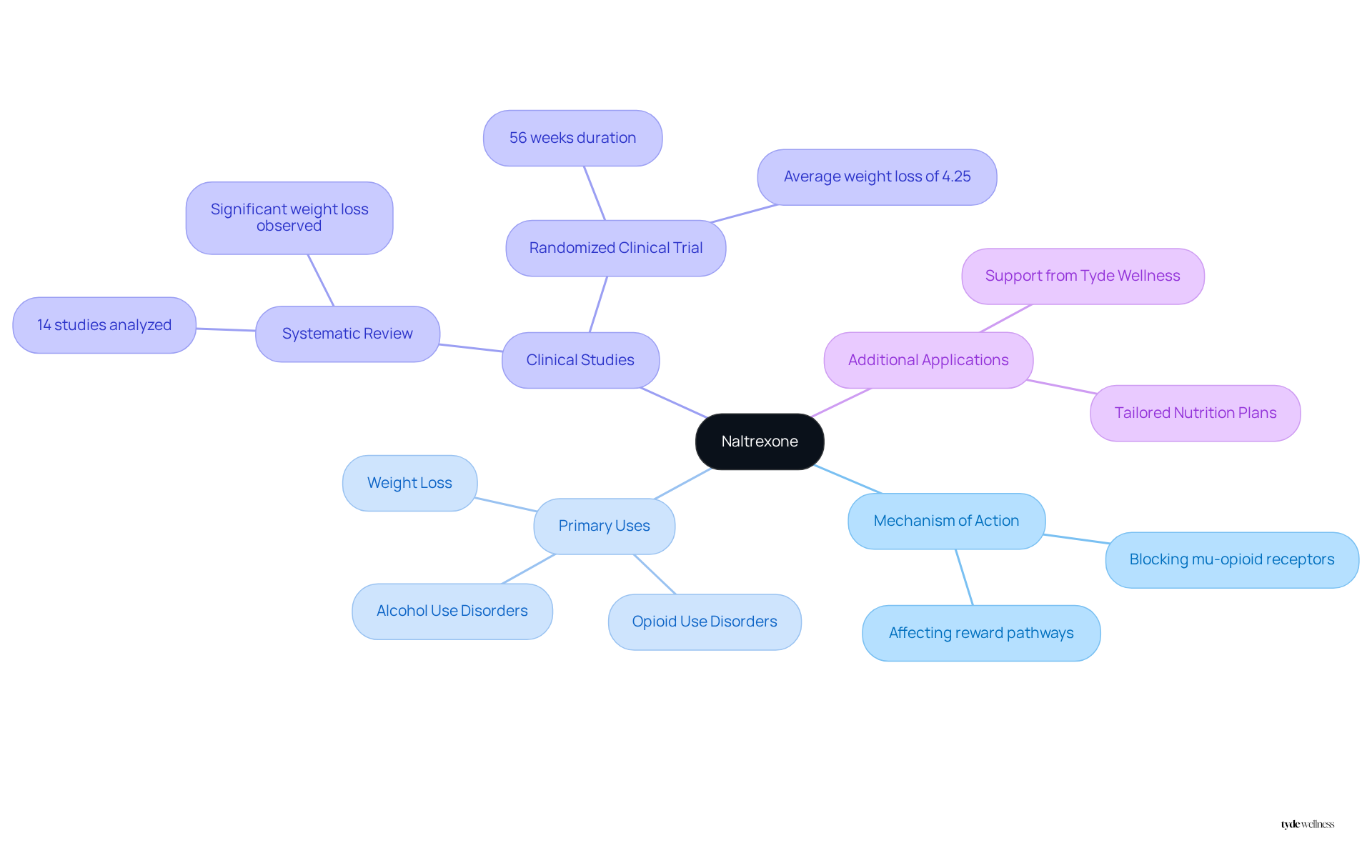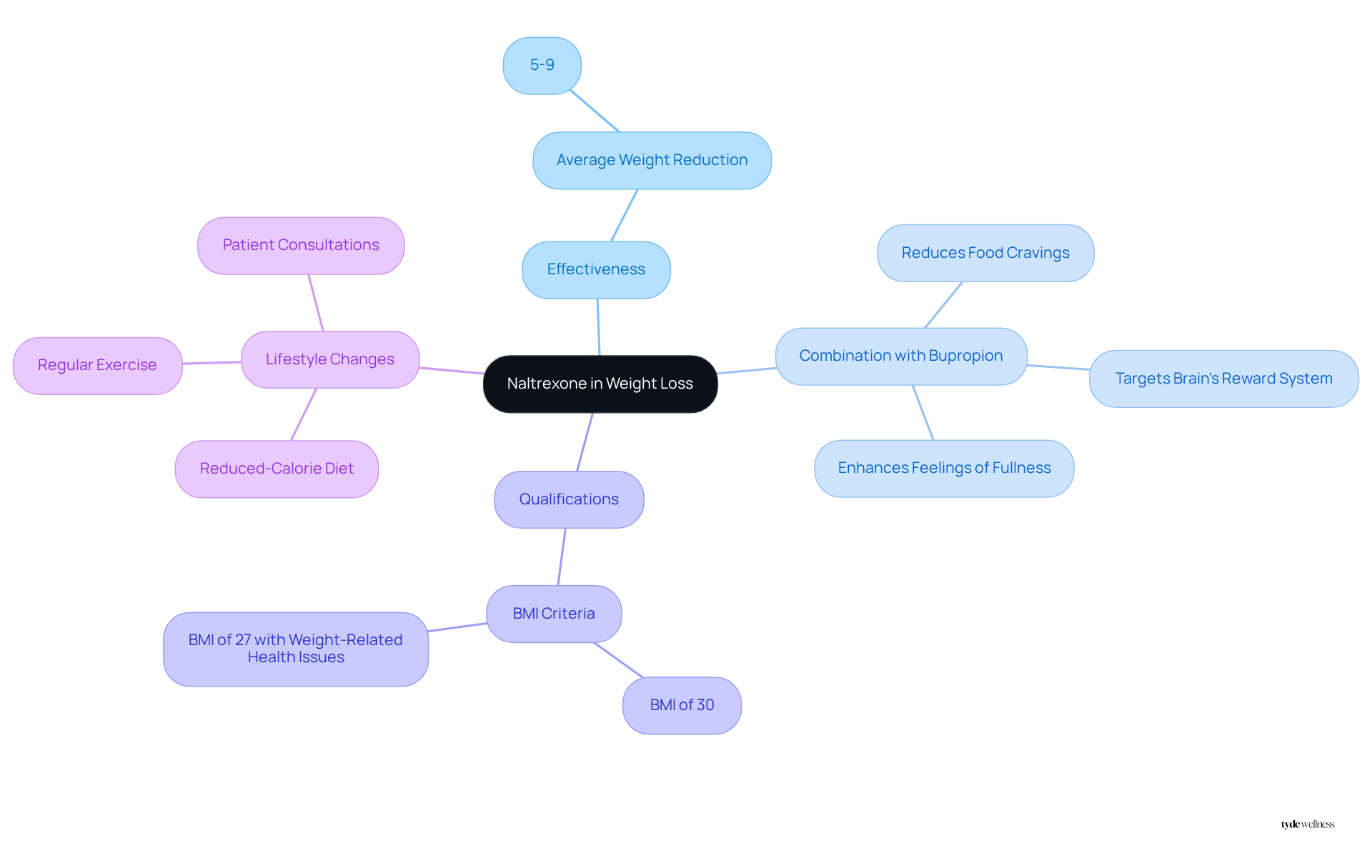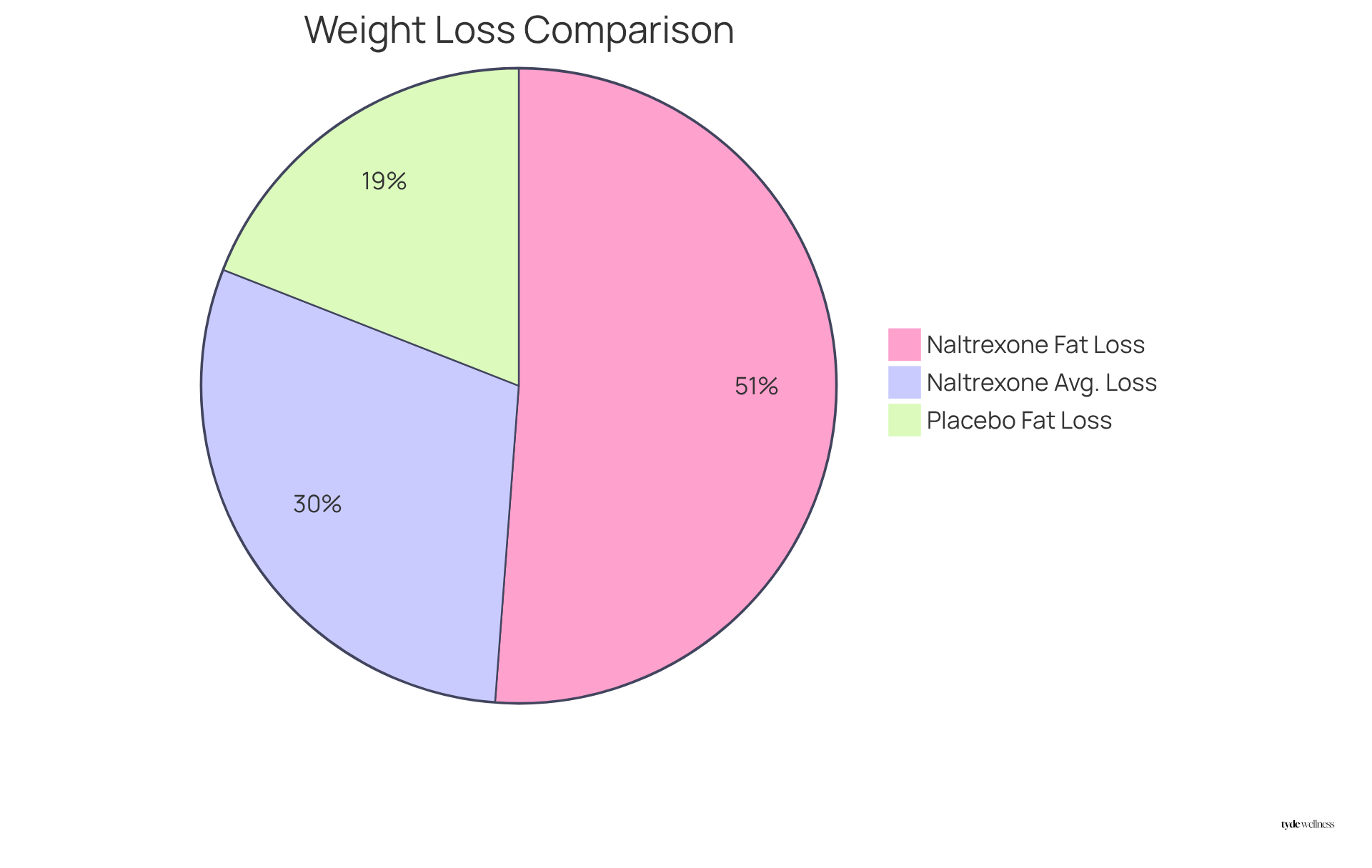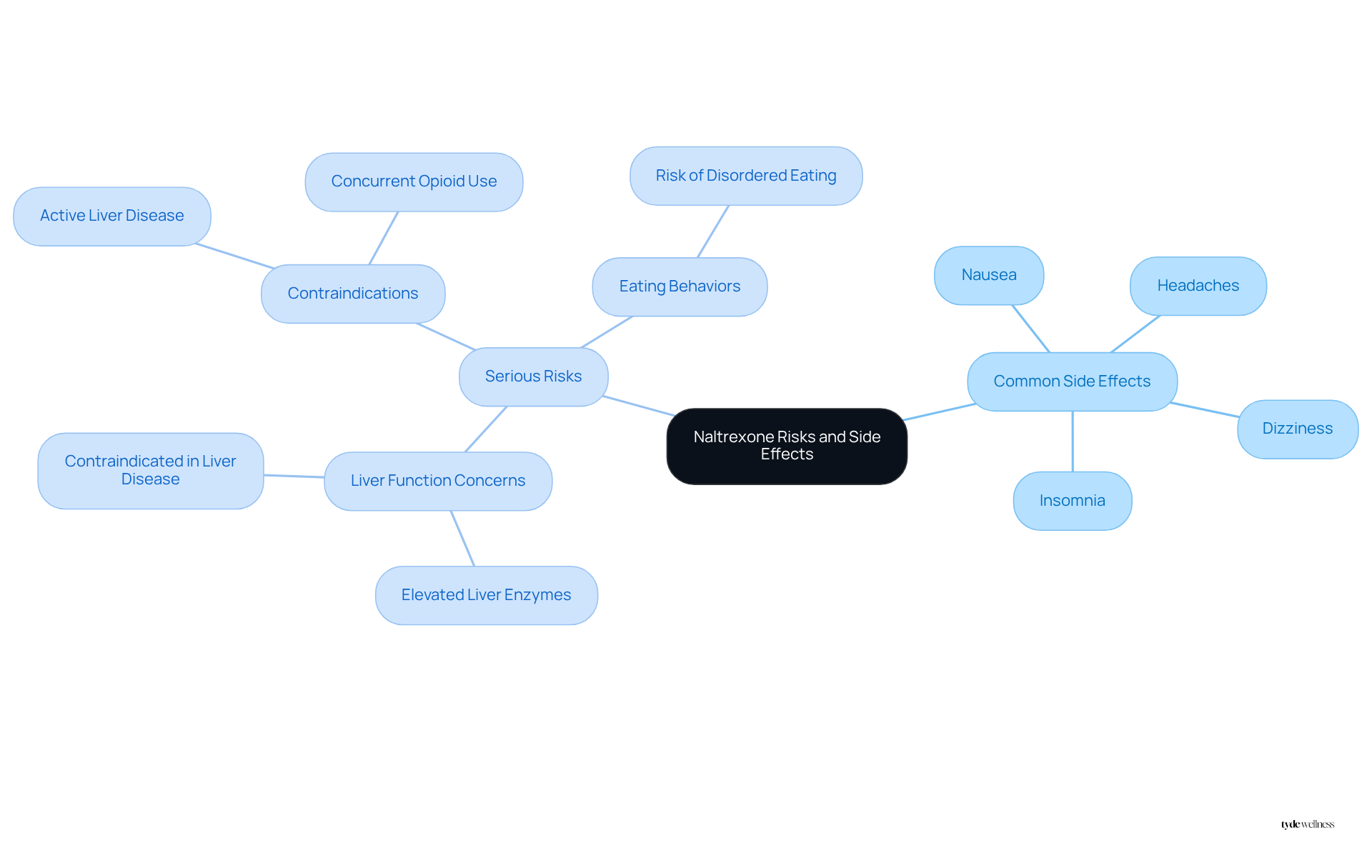Overview
Naltrexone serves as an effective tool for weight loss, functioning primarily as an opioid antagonist that suppresses appetite and reduces cravings. This effect is notably enhanced when Naltrexone is combined with bupropion, resulting in significant reductions in body mass.
Clinical studies cited in the article support these claims, revealing an average weight loss of 5-10% among users. Additionally, the article addresses potential risks and side effects, which underscores the necessity for careful monitoring during treatment.
Introduction
Naltrexone, traditionally recognized for its role in treating opioid and alcohol dependence, is emerging as a potential ally in the fight against obesity. This medication, particularly when combined with bupropion, has demonstrated promise in aiding individuals to achieve significant weight loss by addressing both appetite suppression and food cravings. As interest in this pharmacological approach increases, questions about its safety, effectiveness, and the unique challenges it presents for those aiming to manage their weight come to the forefront.
What are the genuine benefits and risks associated with utilizing naltrexone for weight loss, and how does it measure up against conventional methods?
Define Naltrexone: Mechanism and Uses
Naltrexone is an opioid antagonist primarily utilized in the treatment of opioid and alcohol use disorders. It functions by blocking the effects of opioids at the mu-opioid receptors in the brain, effectively reducing cravings and the euphoric sensations associated with opioid consumption. Recently, naltrexone for weight loss has gained attention for its potential role in managing body mass, especially when combined with bupropion, an antidepressant that also helps in appetite suppression. This combination, promoted under the brand name Contrave, is prescribed to assist individuals in attaining a decrease in body mass through a reduced-calorie diet and enhanced physical activity.
Clinical studies have shown the effectiveness of naltrexone for weight loss in encouraging loss of body mass. A systematic review encompassing 14 studies found that patients using this combination experienced significant reductions in mass, with many achieving at least a 5% decrease in body mass. Furthermore, a randomized clinical trial suggested that participants on naltrexone/bupropion lost an average of 4.25% of their initial body mass over 56 weeks, demonstrating its effectiveness when paired with lifestyle changes.
Moreover, this medication’s mechanism of action goes beyond appetite suppression; it also affects the brain’s reward pathways, which can aid in reducing food cravings. This dual action makes naltrexone for weight loss a , particularly for those who may find it challenging to follow conventional methods for reducing their size. At Tyde Wellness, we enhance the use of naltrexone with tailored nutrition plans suited for hectic schedules, optional peptide and hormonal therapies, and continuous support via text-based coaching, ensuring that you have the resources required for sustainable health improvement.

Contextualize Naltrexone in Weight Loss Treatments
The role of naltrexone for weight loss is becoming increasingly vital in light of the growing obesity crisis. Conventional methods for weight loss, primarily focused on nutrition and physical activity, often fall short for many individuals who struggle to maintain these lifestyle changes. At Tyde Wellness, we understand that women, particularly those experiencing hormonal changes during perimenopause, face unique challenges in managing their bodies. Our comprehensive approach includes a specific medication, especially when paired with bupropion, which offers a pharmacological solution targeting the brain’s reward system. This effectively and enhances feelings of fullness.
Clinical studies indicate that this combination can lead to an average reduction of approximately 5-9%, making it a crucial option for those who have encountered difficulties with traditional methods. To qualify for this treatment, patients typically need:
- A BMI of 30
- A BMI of 27 with weight-related health issues
By addressing these unique challenges, naltrexone for weight loss offers a promising pathway for achieving lasting reductions in body mass. It is essential to note that this medication should be utilized alongside a reduced-calorie diet and exercise to maximize its effectiveness.
Additionally, patients must consult their healthcare provider regarding potential interactions with other medications, ensuring a safe and effective treatment plan. At Tyde, we are committed to empowering women through tailored solutions for weight loss, ensuring that each client receives the personalized support necessary to reclaim their health and confidence. Our empathetic team is dedicated to accountability, providing consistent check-ins and encouragement while upholding integrity through transparent, evidence-based treatments.

Explore Benefits of Naltrexone for Weight Loss
Naltrexone for weight loss offers significant advantages for reducing body mass, primarily due to its ability to suppress appetite and decrease cravings, which leads to lower caloric consumption. Research indicates that individuals using naltrexone/bupropion can expect an average reduction of 5-10% of their body mass within a year. Notably, a 2025 study revealed that patients on this medication experienced a 12.9% decrease in fat mass, compared to 4.8% in the placebo group. This highlights its effectiveness in promoting while preserving lean muscle mass.
Furthermore, naltrexone has been shown to improve metabolic parameters, including insulin sensitivity, which is particularly beneficial for women experiencing hormonal changes during menopause. Importantly, naltrexone for weight loss is a non-addictive medication that does not produce the euphoric effects associated with opioids, making it a safer option for those seeking effective solutions for body mass reduction.

Assess Risks and Side Effects of Naltrexone
This medication, , serves as a beneficial aid for weight reduction, yet it is essential to recognize the specific risks involved. Common side effects include:
- Nausea
- Headaches
- Dizziness
- Insomnia
These side effects are typically mild and temporary. However, more serious concerns regarding liver function exist; the medication has been linked to elevated liver enzymes in some patients, necessitating careful monitoring. It is contraindicated for individuals with active liver disease or those currently using opioids, as this combination can lead to severe complications.
Furthermore, patients are advised to avoid alcohol while taking naltrexone to mitigate the risk of adverse effects. There is also a potential risk of disordered eating behaviors, particularly among individuals with a history of eating disorders. Consequently, healthcare providers must closely observe patients utilizing naltrexone for weight loss as part of their slimming program, ensuring that any negative effects are swiftly addressed and managed.
The standard clinical dose of naltrexone for weight loss is 50 mg, and serious side effects may necessitate medical attention. Patients should consult their healthcare provider if they have a history of liver disease or other relevant conditions, reinforcing the importance of ongoing evaluation of side effects and progress.

Conclusion
Naltrexone has emerged as a noteworthy option in the realm of weight loss treatments, particularly when combined with bupropion. This combination addresses not only appetite suppression but also the underlying cravings that often hinder weight management efforts. By targeting the brain’s reward pathways, naltrexone offers a multifaceted approach to weight loss, making it a viable alternative for those who struggle with traditional methods.
The article outlines the significant benefits associated with naltrexone for weight loss, including its ability to facilitate an average reduction of 5-10% in body mass while preserving lean muscle. Clinical studies support its effectiveness, highlighting improvements in metabolic parameters and the non-addictive nature of the medication. However, it is essential to remain vigilant about potential side effects and contraindications, particularly concerning liver health and interactions with other substances.
As the obesity epidemic continues to pose challenges, the role of naltrexone in comprehensive weight loss programs cannot be overlooked. Individuals seeking effective solutions should consider consulting healthcare providers to explore personalized treatment options that include naltrexone. By understanding both the benefits and risks, patients can make informed decisions that align with their health goals, paving the way for sustainable weight management and improved overall well-being.
Frequently Asked Questions
What is naltrexone and what is its primary use?
Naltrexone is an opioid antagonist primarily used in the treatment of opioid and alcohol use disorders. It works by blocking the effects of opioids at the mu-opioid receptors in the brain, reducing cravings and euphoric sensations associated with opioid use.
How is naltrexone used for weight loss?
Naltrexone has gained attention for its potential role in weight management, particularly when combined with bupropion, an antidepressant that helps suppress appetite. This combination is marketed under the brand name Contrave and is prescribed to aid in weight loss through a reduced-calorie diet and increased physical activity.
What evidence supports the effectiveness of naltrexone for weight loss?
Clinical studies have demonstrated the effectiveness of naltrexone for weight loss. A systematic review of 14 studies found significant reductions in body mass among patients using the combination of naltrexone and bupropion, with many achieving at least a 5% decrease in body mass. A randomized clinical trial indicated that participants lost an average of 4.25% of their initial body mass over 56 weeks.
How does naltrexone affect food cravings?
Naltrexone not only helps suppress appetite but also influences the brain’s reward pathways, which can assist in reducing food cravings. This dual action makes it a promising option for individuals struggling with obesity.
What additional support is offered by Tyde Wellness for individuals using naltrexone for weight loss?
Tyde Wellness enhances the use of naltrexone with personalized nutrition plans tailored for busy schedules, optional peptide and hormonal therapies, and continuous support through text-based coaching, providing resources for sustainable health improvement.
List of Sources
- Define Naltrexone: Mechanism and Uses
- EMA concludes review of weight management medicine Mysimba | European Medicines Agency (EMA) (https://ema.europa.eu/en/news/ema-concludes-review-weight-management-medicine-mysimba)
- Nearly half of weight loss participants reduced alcohol use after starting anti-obesity medication (https://news-medical.net/news/20241129/Nearly-half-of-weight-loss-participants-reduced-alcohol-use-after-starting-anti-obesity-medication.aspx)
- Naltrexone/bupropion for obesity: An investigational combination pharmacotherapy for weight loss (https://sciencedirect.com/science/article/pii/S1043661814000449)
- Safety and efficacy of naltrexone for weight loss in adult patients – a systematic review – PMC (https://pmc.ncbi.nlm.nih.gov/articles/PMC8314402)
- Role of Bupropion Plus Naltrexone for the Management of Obesity – PMC (https://pmc.ncbi.nlm.nih.gov/articles/PMC5998459)
- Contextualize Naltrexone in Weight Loss Treatments
- Top Weight Loss Medications (https://obesitymedicine.org/blog/weight-loss-medications)
- Naltrexone/Bupropion ER (Contrave): Newly Approved Treatment Option for Chronic Weight Management in Obese Adults – PMC (https://pmc.ncbi.nlm.nih.gov/articles/PMC4771085)
- Naltrexone & Bupropion: Weight Loss Treatment (https://my.clevelandclinic.org/health/drugs/19686-bupropion-naltrexone-extended-release-tablets)
- The Latest on Medications for Weight Loss and Type 2 Diabetes | Patient Care (https://weillcornell.org/news/the-latest-on-medications-for-weight-loss-and-type-2-diabetes)
- Role of Bupropion Plus Naltrexone for the Management of Obesity – PMC (https://pmc.ncbi.nlm.nih.gov/articles/PMC5998459)
- Explore Benefits of Naltrexone for Weight Loss
- Naltrexone-Bupropion for Weight Loss: What the Latest Research Tells Us | Philadelphia Integrative Psychiatry (https://phillyintegrative.com/blog/naltrexone-bupropion-for-weight-loss)
- Low Dose Naltrexone: Best Kept Secret in Treating Chronic Disease and Excess Weight?: Thrive Wellness Center For Women: Gynecology (https://thrivewellnessla.com/blog/low-dose-naltrexone-best-kept-secret-in-treating-chronic-disease-and-excess-weight)
- Naltrexone & Bupropion: Weight Loss Treatment (https://my.clevelandclinic.org/health/drugs/19686-bupropion-naltrexone-extended-release-tablets)
- Naltrexone/Bupropion ER (Contrave): Newly Approved Treatment Option for Chronic Weight Management in Obese Adults – PMC (https://pmc.ncbi.nlm.nih.gov/articles/PMC4771085)
- Ethan Lazarus on Naltrexone/Bupropion for Primary Care Treatment of Obesity (https://medpagetoday.com/oma/weight-management/115756)
- Assess Risks and Side Effects of Naltrexone
- Naltrexone – LiverTox – NCBI Bookshelf (https://ncbi.nlm.nih.gov/books/NBK548583)
- Naltrexone 50 mg Weight Loss Reviews: Real Results and Risks Explained | Lambert (https://blogs.umb.edu/lambert/naltrexone-50-mg-weight-loss-reviews-real-results-and-risks-explained)
- Naltrexone oral tablet side effects: Mild to serious (https://medicalnewstoday.com/articles/drugs-naltrexone-tablet-side-effects)
- Naltrexone for Weight Loss (Revia, Vivitrol) | A Risky Weight Loss Pill (https://withinhealth.com/learn/articles/naltrexone-revia-vivitrol-weight-loss-risks)